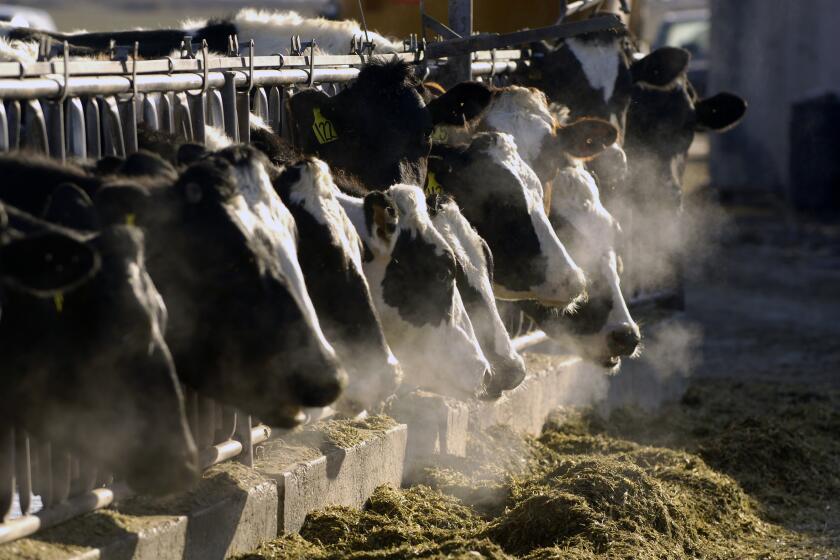Infrastructure investment along the border with Mexico
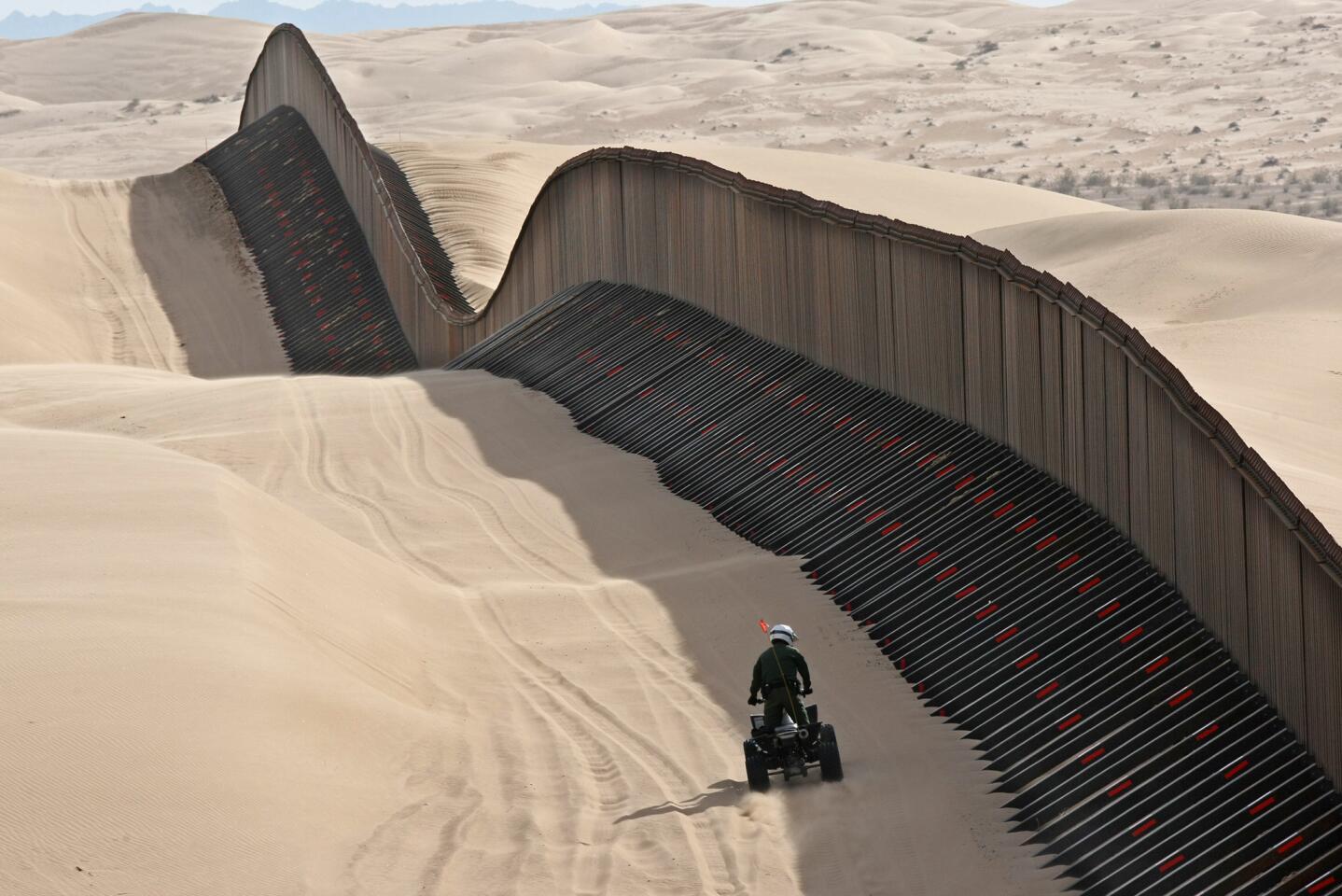
March 4, 2009: A U.S. Border Patrol agent inspects the “floating fence” that sits atop the powdery Imperial Sand Dunes in California. Angled buttresses on either side give the fence stability atop the wind-blown sand. (Don Bartletti / Los Angeles Times)
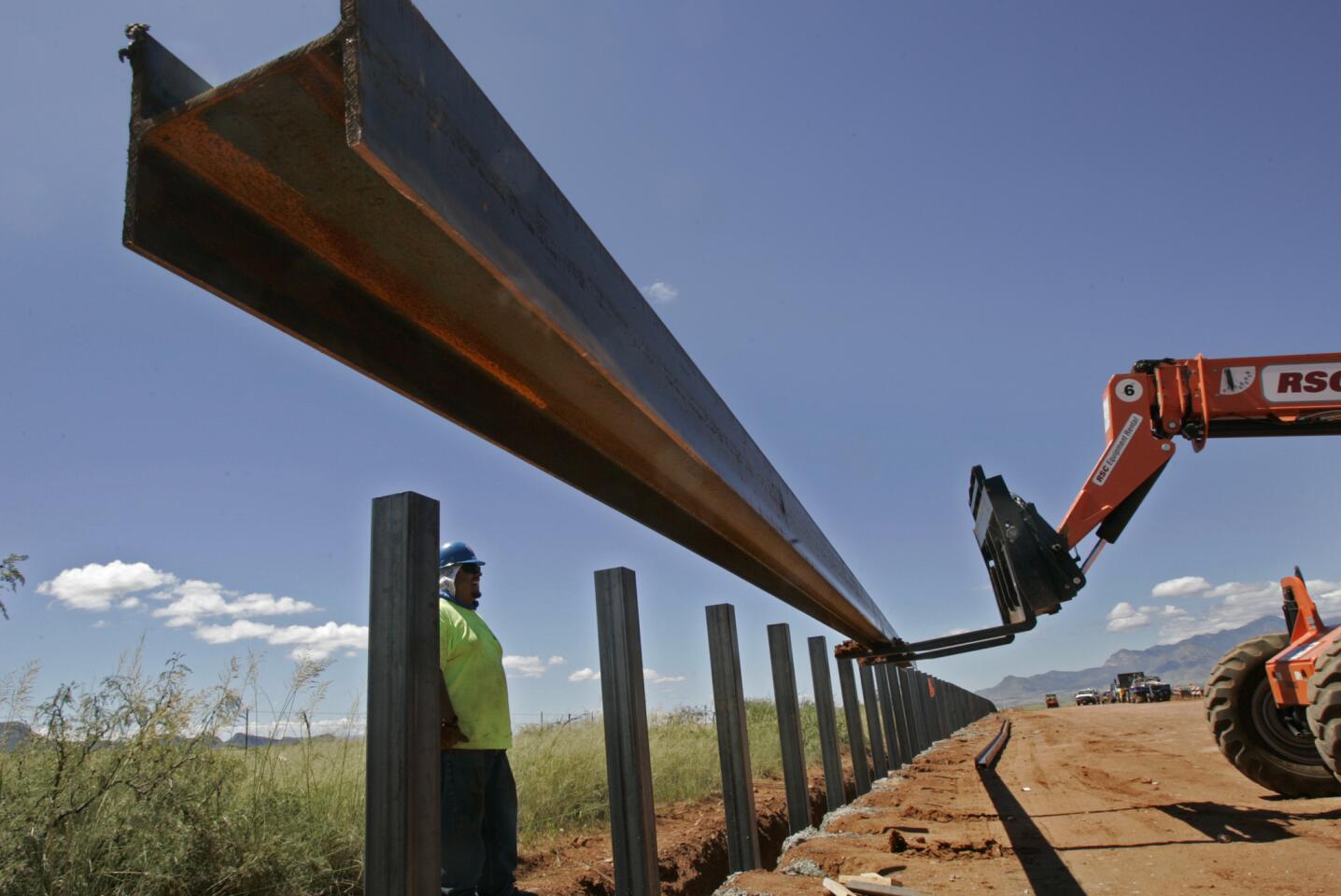
Sept. 11, 2007: A steel rail is lifted into position on the new U.S.-Mexico border fence outside of Naco, Ariz. (Don Bartletti / Los Angeles Times)
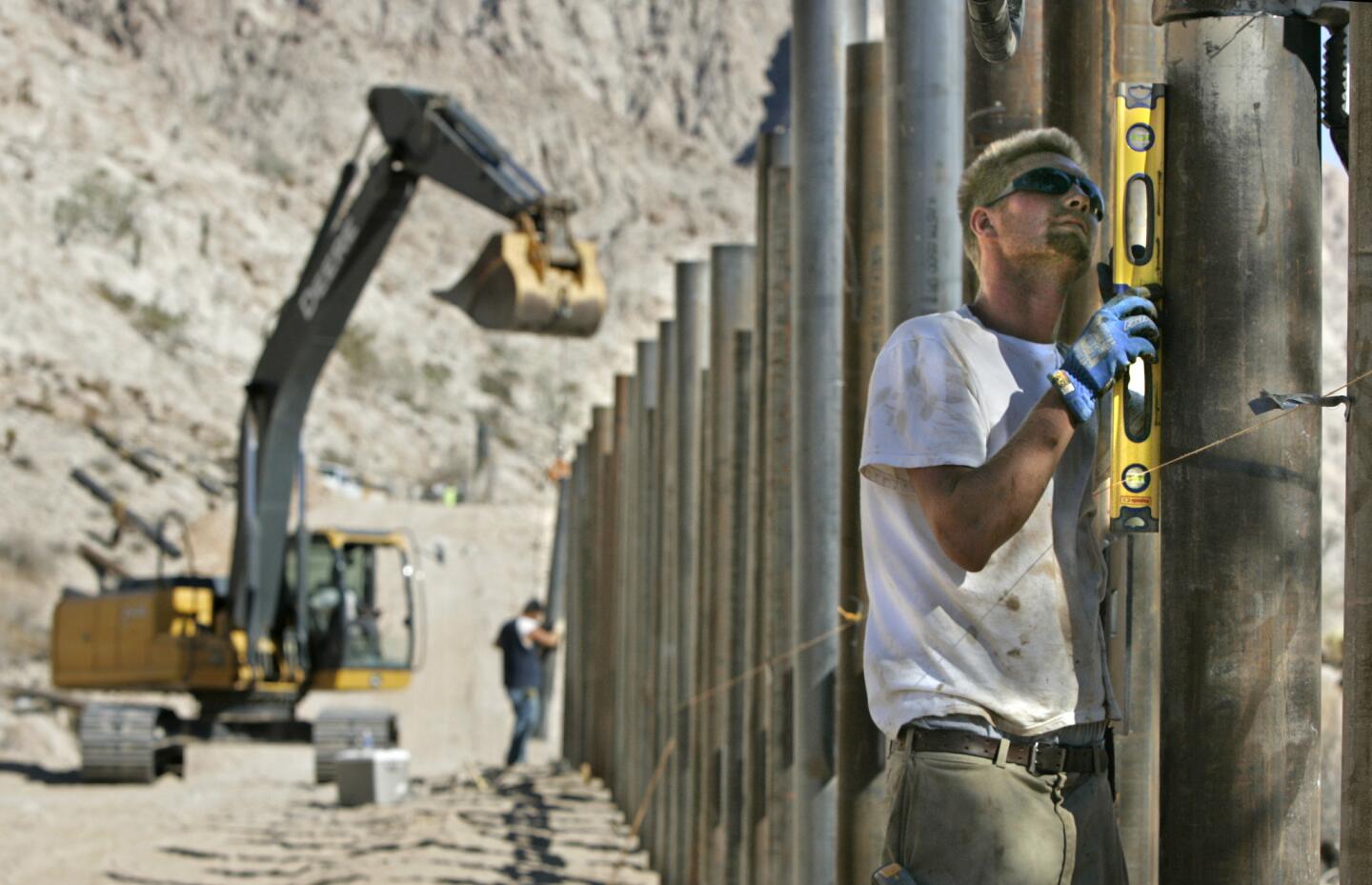
Sept. 19, 2007: Forty miles into the desert east of San Luis, Ariz., Dan Anskate checks the level of a 12-inch-diameter steel fence post. All new fences along the border must be able to withstand a 40-mph impact from a vehicle. (Don Bartletti / Los Angeles Times)
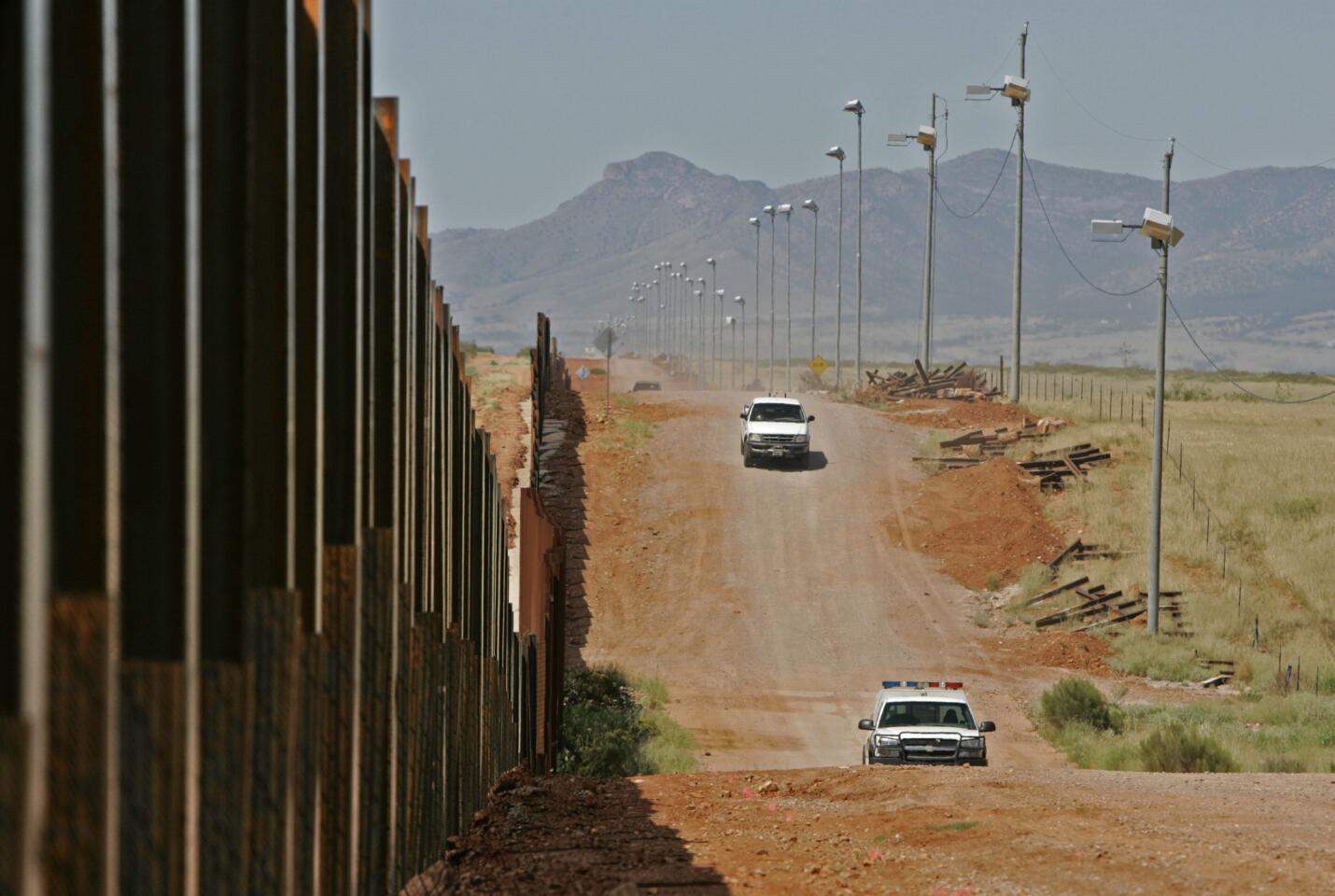
Sept. 11, 2007: The Border Patrol and local ranchers in Naco, Ariz., drive along a gravel road lined with high-intensity security lights, cameras and the new 15-foot-high fence. (Don Bartletti / Los Angeles Times)
Advertisement
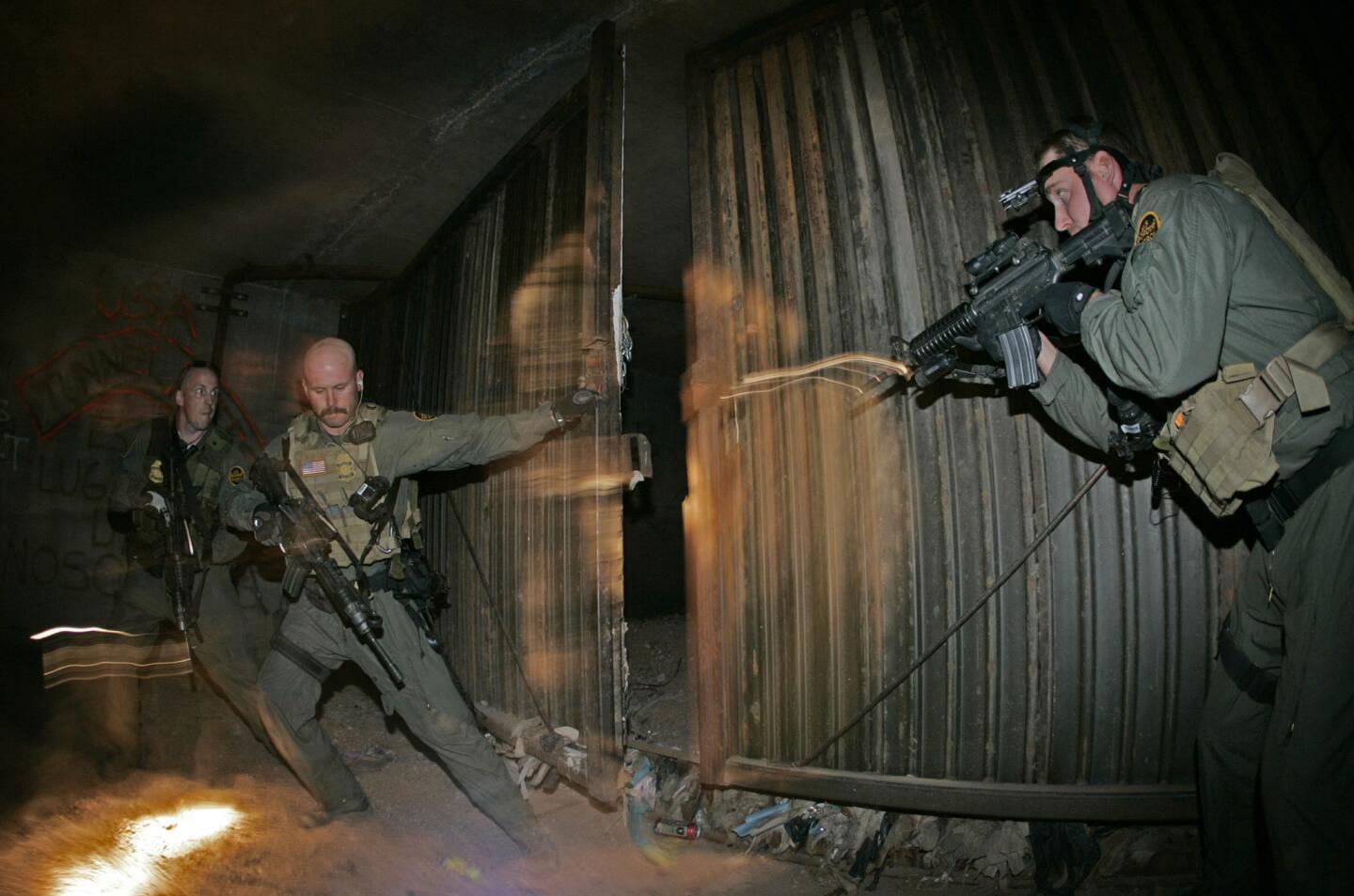
Dec 14, 2005: Searching for smugglers a mile inside a drainage tunnel in Nogales, Ariz., Border Patrol agents yank open a steel gate that defines the U.S.-Mexico border. (Don Bartletti / Los Angeles Times)
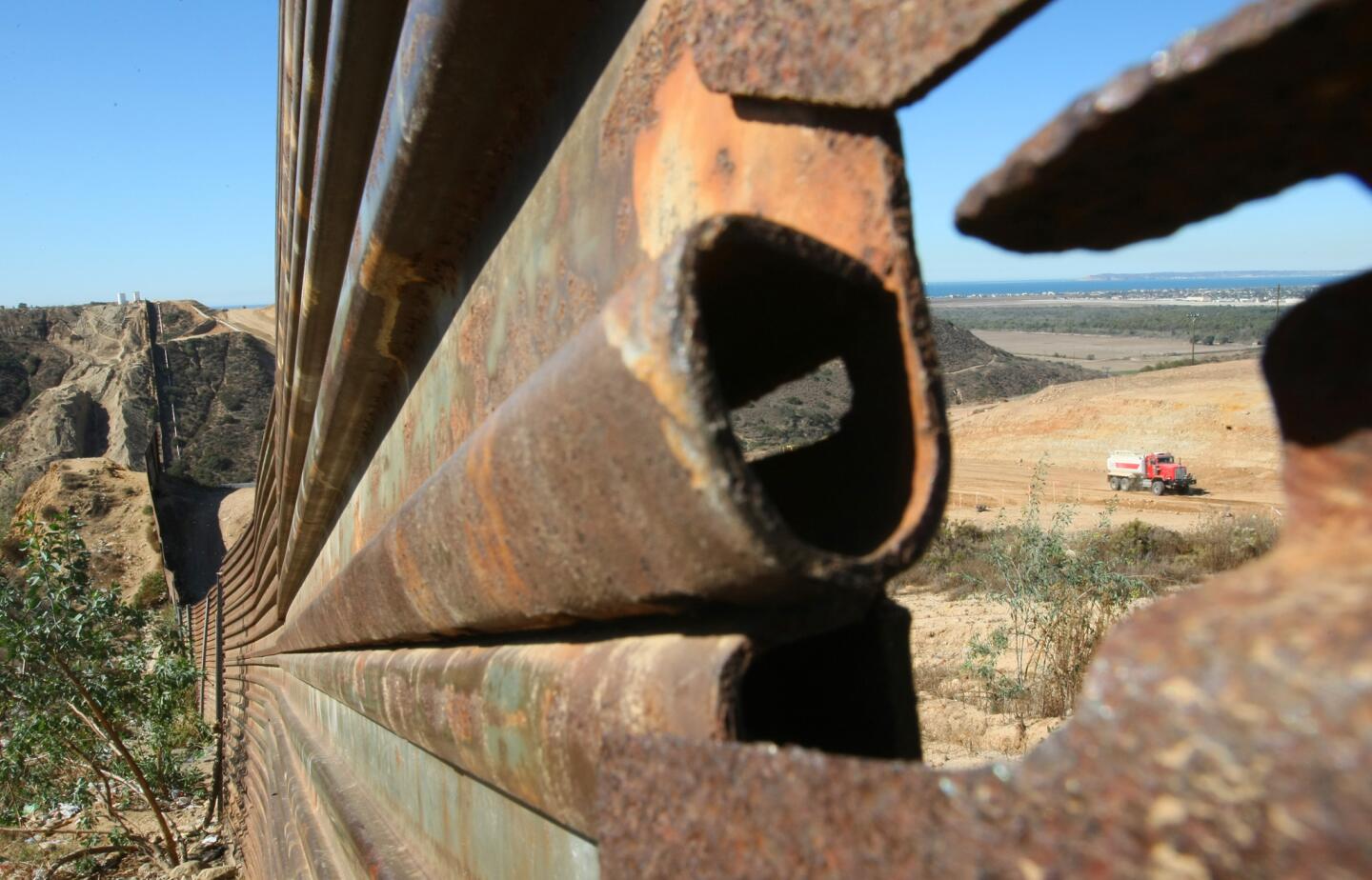
Nov. 21, 2008: Through a small gap in the rusty border fence at Tijuana, a new all-weather road can be seen under construction a short distance to the north. (Don Bartletti / Los Angeles Times)
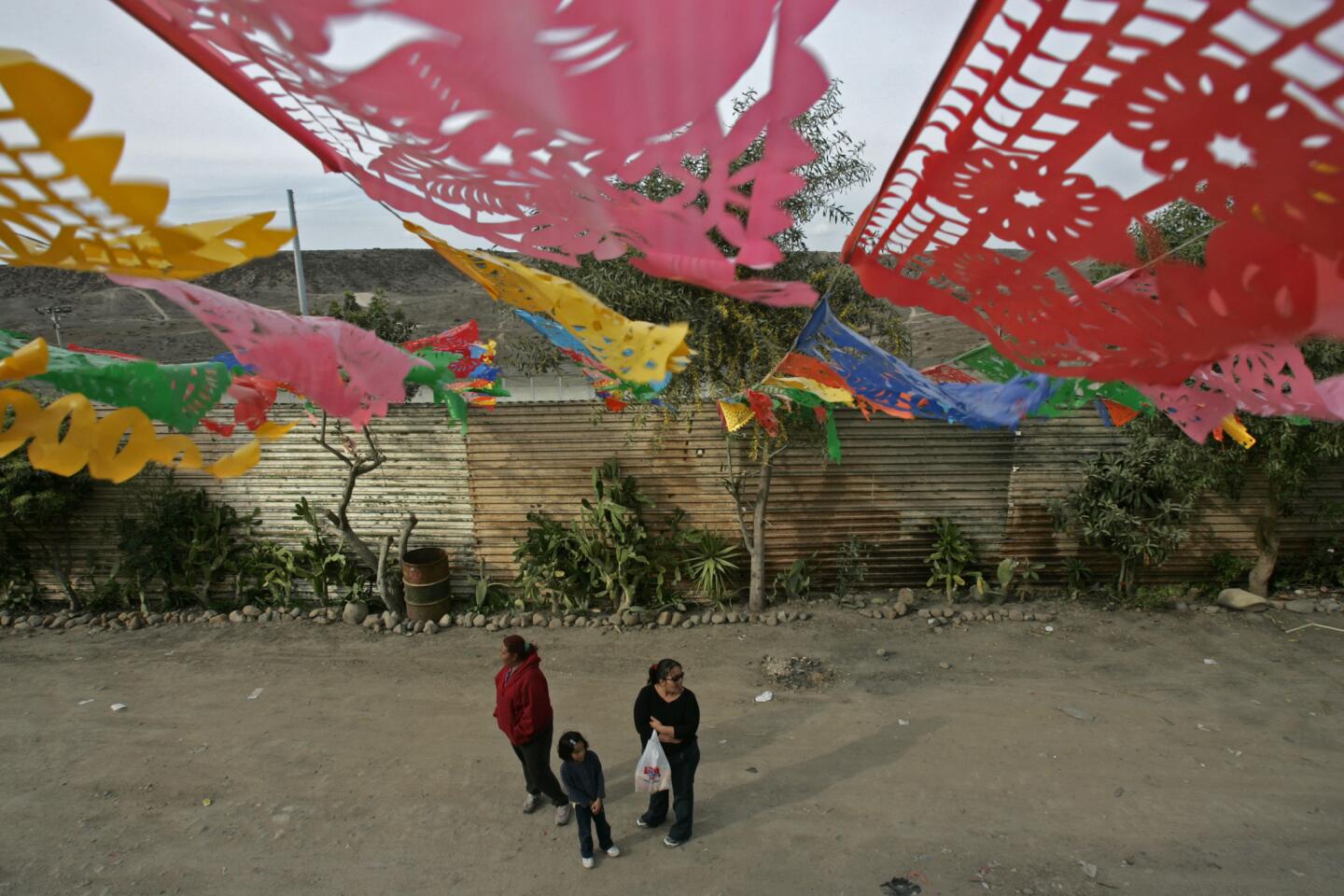
Feb. 16, 2006: Locals congregate in Tijuana’s Colonia Libertad, where the rusty 10-foot-high steel fence from the 1980s marks the border with the United States. Beyond it is a 15-foot-high secondary fence. Colorful plastic bunting stretches from Angelina Torrez’s front porch to the top of the barrier. (Don Bartletti / Los Angeles Times)


